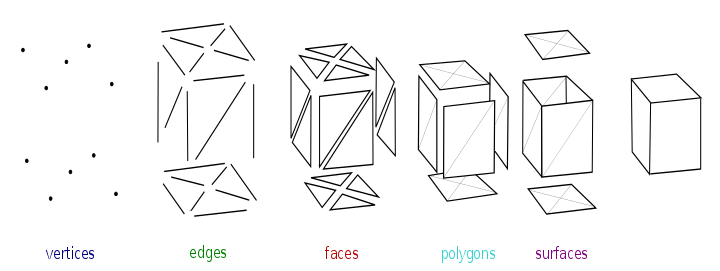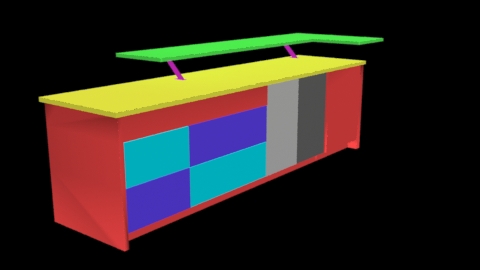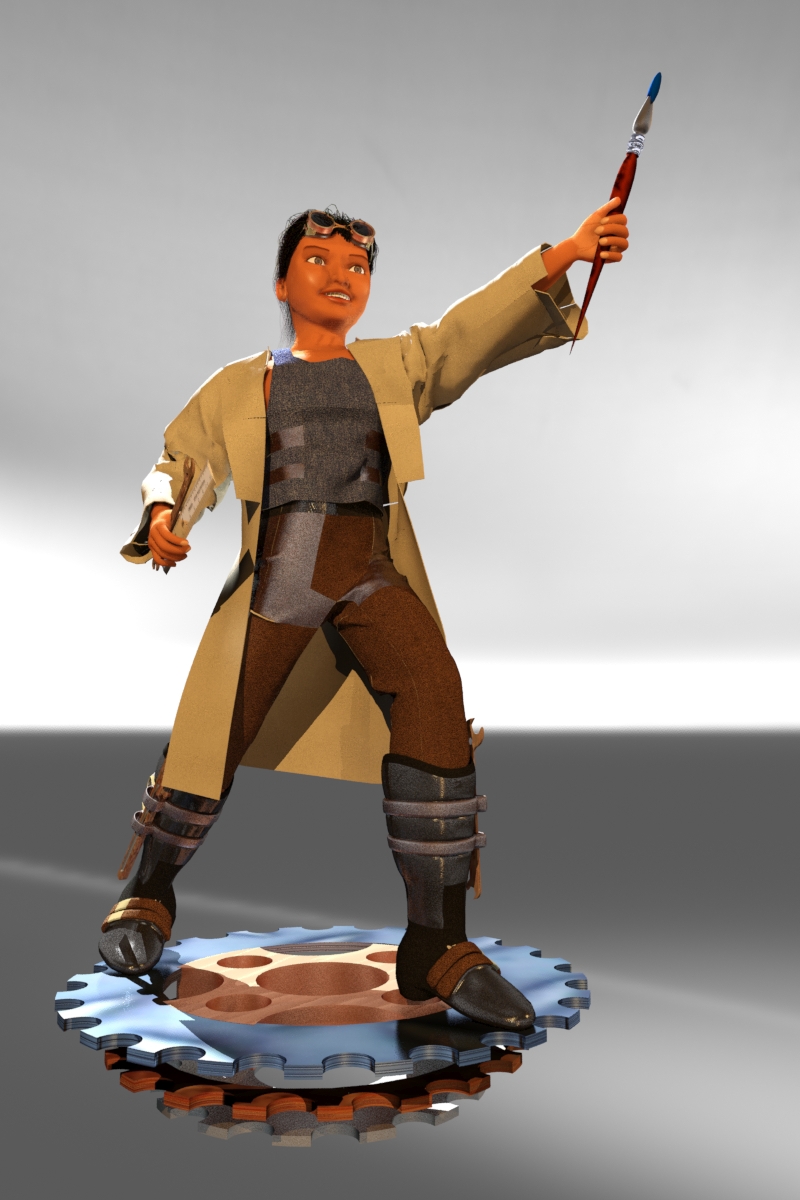At the beginning of the book, we are introduced to the would-be client, a pig. Unimportant and diminutive in the marketplace, Wilbur is, like so many underdeveloped startup businesses, a runt. Originally slated to be destroyed before he can get started, Wilbur is unexpectedly supported by Fern Arable. Like most angel investors supporting small businesses, Fern can protect the young Wilbur during his early growth, but soon Wilbur outgrows his initial investor’s support and is moved to Zuckerman’s farm, and that’s where the real marketing begins.
“Some Pig”
At the Zuckerman agency, we are introduced to Charlotte, a young,
female copywriter who also happens to be a spider. She takes on the Wilbur
account pro-bono and leads off with an experimental ad that immediately attracts
attention. The image is a simple pig in
a pig pen, and the copy is, “Some Pig.”
The consumers of this ad are confused and mesmerized by its
obviousness. Of course, it’s a pig. This is a farm, that’s a pig pen, and we are
looking at a pig. So, what? After a while though, the ad makes us think. What does this ad really mean? Is it a
positive ad suggesting that Wilbur is, in fact, something special:
“Wow, that’s SOME PIG you got there!”?
Or, is that not what it's saying at all?
“Some Pig” can also be a negative statement:
Office Worker One: “Who left this huge mess in the breakroom?”
Office Worker Two: “Some Pig!”
I am reminded of the Volkswagen “Lemon” ad from the 1960s. It’s a picture of a car with the headline
“Lemon” under it. The car is roundish
and kind of looks like a lemon, but lemon is a word that most car makers
wouldn’t want to be associated with their car.
We are intrigued by the single word and are forced to read more copy
where we learn that the word lemon is a reference to the stringent Volkswagen
inspections process. Like the Volkswagen
ad, Charlotte’s “Some Pig” ad confuses us, and we desire more information, but
unlike the Volkswagen ad, there is no more copy to read, so we are forced to just
THINK about it until the next ad. Immediately,
like flies, we are tangled in “Charlotte’s Web.”
“Terrific”
Any new ad campaign can bring in a few customers, but, after
the newness wears off, the public begins to lose interest. At this point, Wilbur, like any small
business owner, begins to panic. Time
for another ad. Charlotte returns with
her second installment. The image is the
same, a farm, a pigpen, and a pig, but this time the headline reads,
“Terrific.” This clears up the questions
from the first ad. “Some Pig” is
obviously a positive statement. This
isn’t just some pig. This is SOME
PIG! In fact, this is SOME TERRIFIC
PIG! Charlotte begins to manipulate
public opinion in her client’s favor.
Her copy has turned her web into a fishing line, and she is reeling us
in.
I would like to point out here, that, while all this copy is written in a spider’s web, (using Cavatica Sans font) not once does the spider take the center stage. The public doesn’t think, “Hey, this spider must be able to write.” In fact, the public doesn’t once even think about the spider. They simply take what they are given. The text MUST relate to the image. The public connects the image to the copy and digests them together as one message. Like a truly great advertiser, Charlotte accepts no fame for herself. All attention goes to the client.
“Radiant”
For her next ad in the Wilbur
campaign, Charlotte pulls out all the stops.
She dares to use a word that has never been used to describe a pig, and in
doing so, defies and challenges Wilbur’s would-be public to think beyond where
their minds usually go when considering swine.
Charlotte’s “Radiant” ad pushes the boundaries while continuing the main
message. Radiant is the family car after
a wash. Radiant is the light in the
window in the late evening. Radiant is
the sun itself, and now, Radiant is Wilbur.
Is this a bit over the top?
No. This is way over the top. Each ad raises Wilbur a bit higher. On an upward arc that took us from “Some
terrific pig,” we add the concept of radiance.
How extreme can this description get?
Where is there left to go after radiance? This is a problem that Wilbur and Charlotte
face after this ad. Are they spreading
it on too thick? Are they “overselling”
the product? Charlotte’s response to
these questions is pure genius.
Throughout the campaign's development, Wilbur remains in awe of Charlotte's work. His start-up has lasted longer and gotten more popular than he could ever have imagined, and for this, he is clearly grateful. He is, however, still the client, and he never stops worrying. He constantly whines to Charlotte about the status of his business and the campaign. He spends his time mulling over feedback from the well-meaning (goose), those with negative bias (lambs), pessimistic rumor spreaders (old sheep) and non-caring bystanders who think they have no skin in the game at all (Templeton the rat). This feedback continually convinces Wilbur that, at some point, the whole campaign will collapse despite Charlotte's best efforts. He brings his worries to Charlotte who is, while sometimes annoyed by Wilbur's anxiety, always does her best to calm her client and stay focused on the bigger picture, their campaign's success.
Throughout the campaign's development, Wilbur remains in awe of Charlotte's work. His start-up has lasted longer and gotten more popular than he could ever have imagined, and for this, he is clearly grateful. He is, however, still the client, and he never stops worrying. He constantly whines to Charlotte about the status of his business and the campaign. He spends his time mulling over feedback from the well-meaning (goose), those with negative bias (lambs), pessimistic rumor spreaders (old sheep) and non-caring bystanders who think they have no skin in the game at all (Templeton the rat). This feedback continually convinces Wilbur that, at some point, the whole campaign will collapse despite Charlotte's best efforts. He brings his worries to Charlotte who is, while sometimes annoyed by Wilbur's anxiety, always does her best to calm her client and stay focused on the bigger picture, their campaign's success.
“Humble.”
At "Radiant", we, the public, are allowed to feel that this must be the end of the Wilbur campaign. In fact, Charlotte has just hauled us to the highest point of a roller coaster ride. We sit, unwittingly teetering at the edge and waiting impatiently for the next aggrandizing buzz word when Charlotte sends us speeding back to the ground. Just as we await our next helping of braggadocio, Charlotte serves us the exact opposite. Charlotte’s “Humble” ad forces us to think again about where this campaign is going. Similar to the “Some Pig” ad that started the campaign, this installment challenges us to wonder how something can be terrific and radiant, but also humble.Here, it becomes necessary to point out that this is no ordinary campaign. Anyone can sell a pig, right? People do it all the time. Ham, bacon, and sausage practically sell themselves and the only thing an advertiser needs to do is position the product in the marketplace. But, THAT is the exact challenge of Charlotte’s campaign. YOU CAN’T EAT THE PIG! This isn’t a food campaign. This is more like a PETA campaign. The message being projected is that Wilbur is so special that you simply can't eat him. It is ethically and morally impossible to eat “some terrific, radiant, humble” pig. It was in the story all along, but as you follow the arc of the ad campaign, this concept side swipes you so hard that it knocks you off your feet.
Charlotte’s “Humble” ad is the best part and is also the logical end, of the Wilbur campaign. The public now sees Wilbur, not as a simple product to be consumed, but an icon to be admired. The people don’t just “buy” Wilbur, they develop “brand loyalty” to Wilbur. Wilbur becomes a local celebrity; a staple; a household word. Charlotte learns that the Wilbur campaign is a complete success just before she dies.
The Clio Award
In Charlotte’s lifetime, she goes from a simple copy girl to full blown ad executive, and she does it with only one campaign. But, was the point of the campaign really just to save the pig? Was that all? No. During the book, Charlotte manages to extend Wilbur’s product life cycle a few extra years, but then what? Ad campaigns are finite. They come, they hit or miss, and then they go. They don’t grant immortality…do they?A spider-like Charlotte only lives for about a year, and the chance of her meeting, much less being admired by, the next generation is non-existent. By saving Wilbur, however, Charlotte earns herself a documentarian. Someone who will share the story of her success with the next generation, and possibly beyond. You see, it was never actually about saving the pig. The story was about saving Charlotte all along. By putting her client first, Charlotte earns herself immortality that inspires the next generation, and beyond. That is what a truly great ad campaign SHOULD do.
























